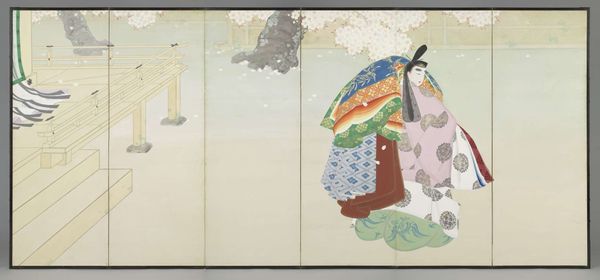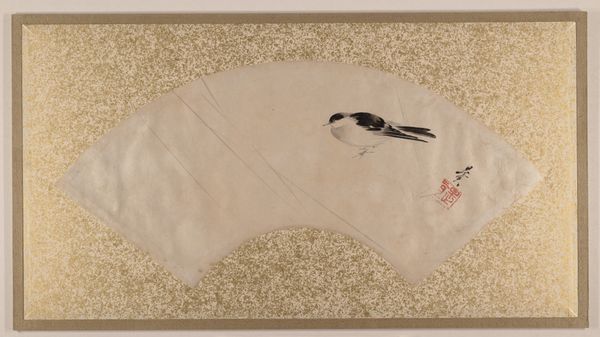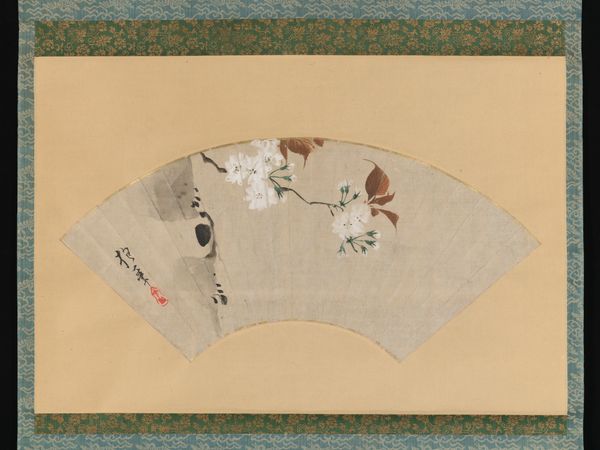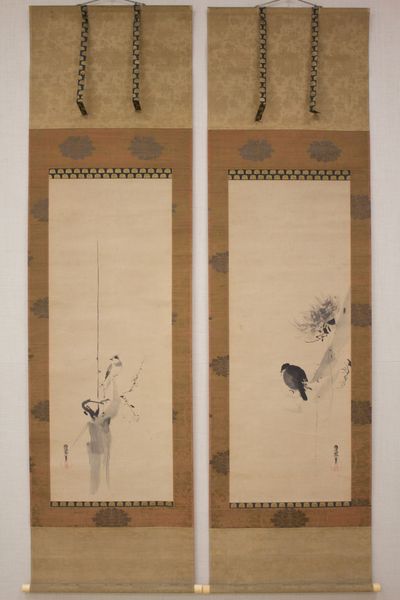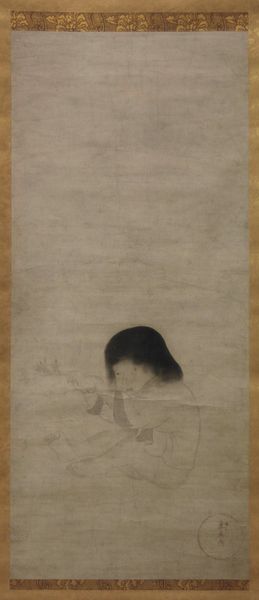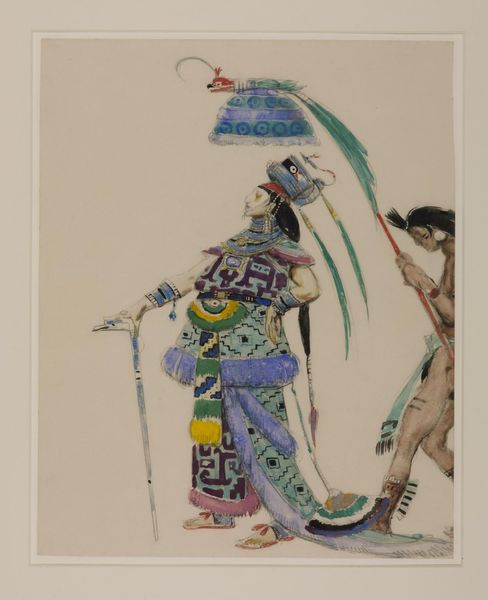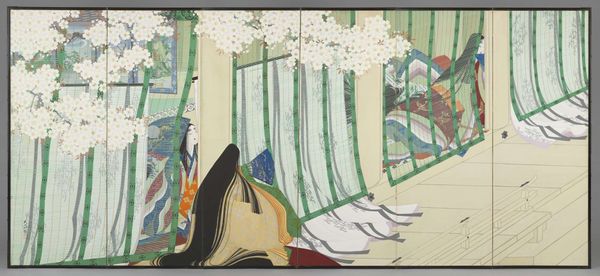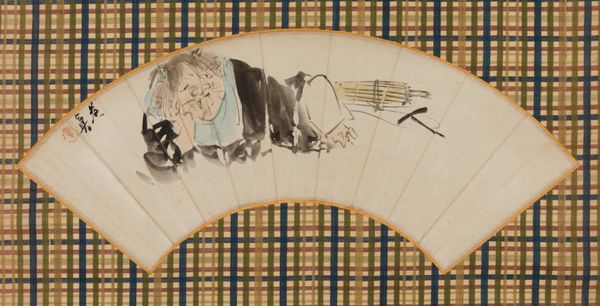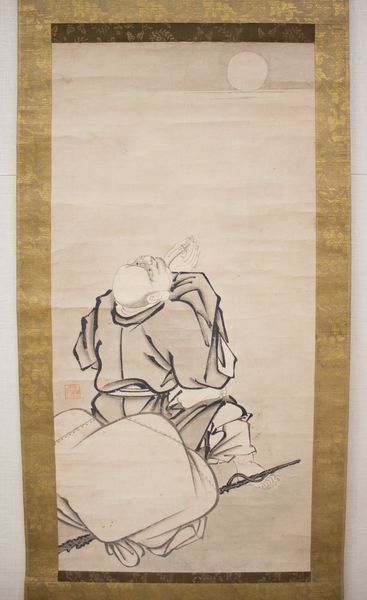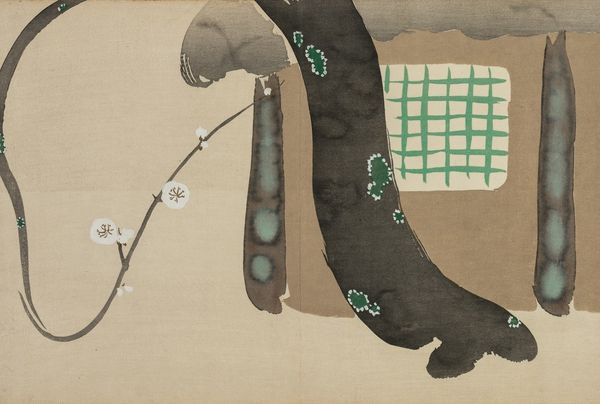
Dimensions: 71 9/16 x 83 in. (181.77 x 210.82 cm) (image)73 1/2 x 84 1/2 in. (186.69 x 214.63 cm)
Copyright: No Known Copyright
Curator: Looking at Ishida Shigeko's "Mother" from 1936, a work currently residing here at the Minneapolis Institute of Art, one can immediately sense the intimacy. Editor: Yes, a sense of quiet domesticity. The soft washes of watercolor create an incredibly tender atmosphere. I'm drawn to the everyday reality being represented, but also the slight eroticism that's quite taboo for its time. Curator: The piece utilizes watercolor and ink on paper, embodying elements reminiscent of the Ukiyo-e tradition, particularly in its intimate portrayal of daily life, wouldn't you say? The composition with its use of line and flat areas of colour feels deliberately simplified. We are presented here with an intriguing perspective on the public versus private spheres of Japanese women in the pre-war era. Editor: Indeed, though perhaps not quite the same floating world aesthetic often attributed to Ukiyo-e; rather, here, there is something altogether more immediate and perhaps confronting. The fact that Shigeko is female contributes to the interpretation; one wonders how a male artist might have treated this intimate scene differently, whether he would be sensitive to gender constructs in a radically patriarchal context. Curator: Precisely. This painting opens a vital dialogue on how art history has, at times, excluded these more sensitive representations, which are pivotal to challenging stereotypical perspectives on domestic and female roles. Its depiction prompts necessary conversations on the sociopolitical conditions influencing perceptions around intimacy and women’s self-representation. Editor: And its location in a public institution like the MIA underscores that, positioning the intimate experience within the broader socio-cultural framework of art. This adds another layer, don't you think? What was once considered too private for public display is now openly discussed. Curator: Yes, this conversation on the boundaries is so key. In thinking about museums' purpose in society today, this is one example of a work whose value rests so explicitly in how it fosters a public engagement in otherwise sidelined experiences, to help revise dominant understandings. Editor: Definitely. This watercolor pushes us to consider the museum's capacity for both representation and active intervention. Its soft lines belie its revolutionary spirit!
Comments
No comments
Be the first to comment and join the conversation on the ultimate creative platform.
